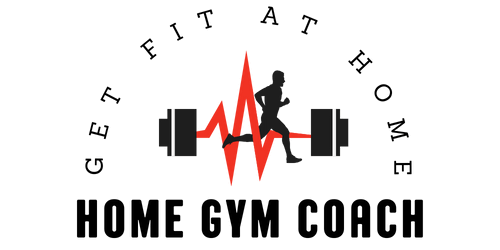Are you finding it challenging to set achievable fitness goals for your home workouts? It’s a common struggle many people face, especially when navigating the world of home fitness. Whether you’re a beginner or experienced, setting clear goals can help you stay motivated and track your progress. In this article, we’ll explore some practical tips and strategies to help you set realistic and achievable fitness goals for your home workouts. So, if you’re ready to take your fitness journey to the next level, let’s dive in and discover the secrets to success!

Setting Fitness Goals
Setting fitness goals is an important step in your journey towards a healthier and fitter lifestyle. By setting specific goals, you can measure your progress and stay motivated. Here are some key factors to consider when setting your fitness goals.
Identify Your Fitness Level
Before starting any fitness program, it’s crucial to assess your current fitness level. This will help you understand where you are starting from and what areas you need to focus on. Consider factors such as strength, endurance, flexibility, and overall cardiovascular fitness. This self-assessment will serve as a benchmark for setting realistic fitness goals.
Consider Your Time Commitment
One of the first things to consider when setting fitness goals is your time commitment. Assess how much time you can dedicate to working out each week. Be honest with yourself and consider your work schedule, family commitments, and other responsibilities. Setting goals that align with your available time will increase the chances of achieving them.
Determine Your Priorities
Another aspect to consider when setting fitness goals is your personal priorities. What are the main reasons why you want to improve your fitness? Is it to lose weight, gain strength, improve your overall health, or simply incorporate exercise into your daily routine? Identifying your priorities will help you set goals that are meaningful and align with your desired outcome.
Choosing the Right Goals
Once you have assessed your fitness level, time commitment, and priorities, it’s time to choose the right goals that will lead you towards success.
Focus on Specific and Measurable Goals
When setting fitness goals, it’s essential to make them specific and measurable. Instead of saying, “I want to get stronger,” a more effective goal would be, “I want to be able to do 10 push-ups within three months.” Specific and measurable goals provide a clear target to strive for, keeping you focused and motivated.
Set Realistic and Attainable Goals
While it’s important to challenge yourself, it’s equally important to set realistic and attainable goals. If you haven’t exercised regularly in years, setting a goal to run a marathon in six months may not be realistic. Start with smaller, achievable goals that build momentum and pave the way towards larger goals.
Set Short-term and Long-term Goals
To stay motivated and maintain momentum throughout your fitness journey, it’s essential to set both short-term and long-term goals. Short-term goals allow you to track your progress regularly and provide a sense of accomplishment, while long-term goals keep you focused on the bigger picture. Breaking down your ultimate goal into smaller milestones will help you stay motivated and on track.

Goal Setting Strategies
Setting goals is an art, and incorporating some effective strategies can significantly enhance your chances of success.
SMART Goals
The SMART framework is a powerful tool for setting effective goals. SMART stands for Specific, Measurable, Achievable, Relevant, and Time-bound. When setting fitness goals, ensure they meet the SMART criteria. For example, a SMART goal could be, “I will jog for 30 minutes, three times a week, for the next three months, to improve my cardiovascular fitness.”
Affirmation and Visualization
Visualizing your goals and affirming them can have a profound impact on your mindset. Take a few moments each day to visualize yourself achieving your fitness goals. Imagine how it would feel, how it would positively impact your life, and the sense of accomplishment it would bring. Additionally, repeat positive affirmations related to your goals to reinforce your belief in your ability to achieve them.
Break Goals into Smaller Steps
Large goals can feel overwhelming, but breaking them down into smaller, manageable steps can make them more attainable. For example, if your long-term goal is to lose 30 pounds, break it down into smaller goals of losing 2 pounds per week. By focusing on these smaller steps, you will experience progress and build confidence along the way.
Creating a Workout Routine
Once you have set your fitness goals, it’s time to create a workout routine that aligns with those goals.
Assess Your Available Resources
Before creating a workout routine, consider the resources available to you. If you’re working out at home, you may need to invest in some basic equipment such as dumbbells, resistance bands, or a yoga mat. Take stock of what you have and what you may need to acquire to perform a variety of exercises effectively.
Determine the Frequency and Duration
To create an effective workout routine, determine how often you will exercise and how long each session will be. The American Heart Association recommends at least 150 minutes of moderate-intensity aerobic activity or 75 minutes of vigorous-intensity activity per week. Depending on your goals and fitness level, you may need to adjust these recommendations accordingly.
Include a Variety of Exercises
To keep your workouts interesting and target different muscle groups, include a variety of exercises in your routine. This will help prevent boredom and plateaus and ensure that you are working all major muscle groups. Incorporate cardiovascular exercises, strength training, flexibility exercises, and any other activities that align with your goals.

Monitoring Progress
Monitoring your progress is crucial to staying motivated and making adjustments as needed.
Track Your Workouts
Keep a record of your workouts to track your progress over time. Note down the exercises performed, sets, reps, weights used, and any additional details you find relevant. Tracking your workouts allows you to see how far you’ve come and identify areas for improvement.
Measure Your Progress
In addition to tracking your workouts, it’s important to measure your progress towards your fitness goals. This could include periodic measurements of body weight, body measurements, or physical performance tests. By regularly measuring your progress, you can adjust your routine and celebrate your achievements.
Make Adjustments as Needed
As you progress towards your fitness goals, it’s important to make adjustments as needed. If you find that a particular exercise or routine is not yielding the desired results, don’t be afraid to switch things up. Consult with a fitness professional or do your research to find alternative exercises or techniques that may better align with your goals.
Staying Motivated
Maintaining motivation is key to achieving long-term success in your fitness journey.
Set Rewards and Celebrate Milestones
Rewarding yourself and celebrating milestones along the way can provide a much-needed boost in motivation. Set small rewards for reaching certain milestones or achieving specific goals. Treat yourself to something you enjoy, such as a massage, new workout gear, or a day off. Celebrating your achievements reinforces your progress and keeps you motivated.
Seek Support and Accountability
Enlist the support of friends, family, or workout buddies who can help keep you accountable. Share your goals with them and ask for their support and encouragement. Having someone to share your journey with can make it more enjoyable and increase your chances of success.
Find Enjoyable Workouts
One of the best ways to stay motivated is to find workouts that you genuinely enjoy. If you dislike running, don’t force yourself to run. Explore different activities and find what brings you joy. Whether it’s dancing, cycling, swimming, or yoga, find a workout that you look forward to, and it won’t feel like a chore.
Overcoming Challenges
Throughout your fitness journey, you may encounter various challenges. Here are some strategies to overcome common hurdles.
Managing Time Constraints
Balancing a busy schedule with a fitness routine can be challenging. Prioritize your workouts by scheduling them in advance and treating them as non-negotiable time slots. Look for opportunities to make your workouts more efficient, such as incorporating HIIT (High-Intensity Interval Training) or performing shorter, more intense workouts.
Dealing with Plateaus
Plateaus are a common occurrence in any fitness journey. When you hit a plateau and no longer see progress, it’s important not to get discouraged. Instead, mix up your routine, increase the intensity, or try new exercises to challenge your body in different ways. Plateaus are an opportunity for growth and can lead to breakthroughs if approached with the right mindset.
Preventing Injury
Injuries can sideline your fitness progress, so it’s essential to prioritize safety during your workouts. Warm up properly before exercising, cool down afterwards, and listen to your body’s signals. If you experience pain or discomfort, modify your workout or consult with a healthcare professional if necessary. Pay attention to proper form and technique to minimize the risk of injury.
Seeking Professional Guidance
If you’re new to fitness or struggling to reach your goals, seeking professional guidance can provide valuable support.
Consulting with a Fitness Trainer
Working with a qualified fitness trainer can help you develop a personalized workout plan, ensure proper form and technique, and keep you accountable. Trainers have the knowledge and experience to guide you towards your goals and motivate you throughout your fitness journey.
Using Apps and Online Resources
In the digital age, there are countless fitness apps and online resources available to assist you in setting and achieving your fitness goals. From workout tracking apps to virtual training programs, these tools can provide guidance, motivation, and accountability right at your fingertips.
Joining Online Fitness Communities
Being part of an online fitness community can provide a sense of camaraderie and support. Join platforms or social media groups where you can share your progress, seek advice, and connect with like-minded individuals. Being surrounded by a community of individuals with similar goals can be inspiring and help you stay motivated.
Modifying Goals as Needed
Your fitness journey is a dynamic process, and it’s important to reassess and modify your goals as needed.
Reassessing Your Goals
Periodically reassessing your goals is essential to ensure they still align with your priorities and desired outcomes. As you progress, you may find that new opportunities or challenges arise, requiring a shift in focus. Regularly revisit your goals and make any necessary adjustments to keep them relevant and effective.
Adjusting Your Plan
As you reassess your goals, it may be necessary to adjust your workout plan. Consider factors such as changes in available resources, time constraints, or personal preferences. A flexible plan that can adapt to new circumstances will help you stay on track and continue making progress.
Setting New Challenges
Once you have achieved a goal, it’s important to set new challenges to maintain your motivation and avoid stagnation. Push yourself to reach new heights and explore areas of fitness that interest you. Continually seeking new challenges will ensure that you continue to grow and evolve on your fitness journey.
Maintaining Consistency
Consistency is key when it comes to achieving and maintaining your fitness goals. Here are some strategies for maintaining consistency.
Establishing a Routine
Establishing a regular workout routine can help you stay consistent. Schedule your workouts at the same time each day or week to make them a non-negotiable part of your routine. By creating a habit, you’ll be more likely to stick to your fitness goals.
Building Habits
Incorporate fitness habits into your daily life to make them effortless. For example, take the stairs instead of the elevator, go for a walk during your lunch break, or do a short workout routine before starting your day. By integrating fitness habits into your lifestyle, you’ll find it easier to maintain consistency.
Adapting to Change
Life is full of changes, and it’s important to adapt your fitness routine accordingly. If circumstances change, such as a new job, family commitments, or unexpected events, be flexible in adjusting your workout plan. Embrace change and find creative ways to continue prioritizing your fitness journey.
By following these steps and strategies, you can set achievable fitness goals, create an effective workout routine, and stay motivated on your journey towards a healthier and fitter lifestyle. Remember, progress takes time and effort, but with consistency and determination, you can achieve your fitness goals and enjoy the many benefits of a fit and active lifestyle.


